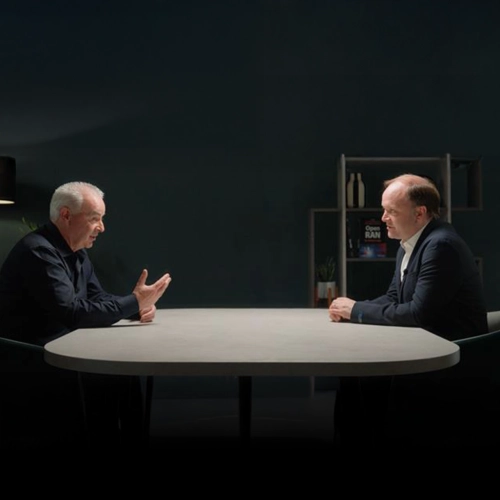6G Forward
Research to Reality
At VIAVI, we prove technologies and deliver transformative solutions that enhance network efficiency, security, and accessibility. Our mission spans applied research, PoC innovation, patent portfolio management, research partnerships, standardization engagement, and knowledge transfer from R&D ideas to products.
With a strong history in cellular solutions, and a dedicated CTO Team alongside VIAVI Marconi Labs™ research scientists, we have an unmatched understanding of specific requirements of 6G use cases.
The VIAVI 6G Forward program is built on collaboration and reinforced by four pillars of 6G development.

Research Areas
VIAVI is focused on several key research vectors, and has multiple patents filed. These include spectrum and topologies, native AI end-to-end solutions, expanding vertical applications, optical-wireless coalescence, and ensuring security and resilience in 6G networks.
From full AI neural receivers, new waveforms to advanced multiple access techniques, our work promises dynamic adaptability in future network deployments.
VIAVI Marconi Labs™ - From Ideas to Products
The 6G program showcases VIAVI 6G Proofs of Concepts using our GPU-powered real-time 6G testbed developed by our VIAVI Marconi Labs™ team, demonstrating advancements such as new waveforms in the MIMO Delay-Doppler domain, advanced multiple access technology in overloaded networks, and full AI neural network transmission.
Discover Our Latest Proofs of Concepts and Solutions
VIAVI Marconi Labs advance telecommunications through cutting-edge research, collaboration, and knowledge sharing, with a current major focus on 6G. Our collaborative environment fosters creativity, diversity, and excellence to address the evolving challenges in the telecommunications landscape.
With a substantial team of PhD-qualified scientists, and even more innovation engineers, VIAVI Marconi Labs excels in turning ideas into Proof-of-Concepts (PoCs) and progressing them to main-track product development.
VIAVI GPU-Powered Real-Time 6G Testbed

The VIAVI GPU-Powered Real-Time 6G Testbed is an advanced platform designed to validate theoretical 6G concepts in real-world conditions before full-scale deployment. This cutting-edge system enables researchers and engineers to experiment with next-generation wireless technologies while significantly reducing development time and costs.
Global Technology Forward Projects
6G City-Scale Digital Twin
Our collaborations with renowned research institutions such as the Institute for Wireless Internet of Things and the Open6G cooperative research center at Northeastern University have led to the creation of a 6G city-scale digital twin. Powered by advanced AI and machine learning (ML) technologies, it plays a key role in training components like the 6G AI-Native Air Interface, advancing our understanding of network dynamics and performance.
This achievement highlights the importance of AI/ML in radio propagation modeling for large-scale network digital twins, integrating insights from real-world measurements and higher-layer KPIs through cooperative efforts.
VIAVI contributes to:
- Harmonizing with Open RAN Architecture by RIC, SMO interworking with APN Controller
- Digital Twin for APN
- Adopt Fiber Sensing Solution in APN Architecture
Forum Objective: Innovative Optical and Wireless Network (IOWN), to provide advanced capabilities of low-power consumption, ultra-wide bandwidth, large-scale simulations, and ultra-realistic UI/UX for future services through cutting-edge technologies such as next generation photonics-based technologies.
6G-TWIN
VIAVI tests and validates Digital Twin for Energy Saving and Mobility.
6G-TWIN Objective: provide the foundation for the design, implementation and validation of an AI-native reference architecture for 6G systems that incorporates Network Digital Twins as a core mechanism for the end-to-end, real- time optimisation, management and control of highly dynamic and complex network scenarios.
To achieve this, 6G-TWIN will deliver methods, modelling and simulation solutions for the definition, creation and management of multi-layered virtual representations of future 6G systems, where heterogeneous domains (i.e., edge, fog and cloud) and communication technologies (e.g., cellular, optical and Non-Terrestrial Networks (NTN)) coexist.
The associated solutions will be demonstrated in two complementary use cases addressing mobility and energy-efficiency challenges, aligned with the expected use cases of 6G and the Key Performance Indicators (KPI) defined in previously funded projects.
6G BRAINS
Bringing Reinforcement learning Into Radio Light Network for Massive Connections (6G BRAINS)
6G BRAINS addresses current challenges in networks, beyond 5G (B5G), 6G, Terahertz (THz), Optical Wireless Communications (OWC), Artificial Intelligence (AI), Multi-agent Deep Reinforcement Learning, Highly Dynamic Ultra-Dense Device-to-Device (D2D) Cell-free Networks, Grant Free-Non-Orthogonal Multiple Access (GF-NOMA), End-to-End (E2E) Slicing, Integrated Access Backhaul (IAB), Industrial Virtual Assistant (IVA), Simultaneous Localization and Mapping (SLAM), Content Distribution Network (CDN), massive Machine Type Communication (mMTC) and Ultra-Reliable Low Latency Communication (URLLC).
Innovating 6G for the future. Actively shaping 6G standards and have defined 6 research vectors to ensure risks to suppliers and service providers are minimized. Fully developing the potential of 5G creates an upgradable foundation that could revolutionize networks and usher in not just advanced mission critical URLL use cases but entirely new industries.
Find out more at: 6G BRAINS
VIAVI provides 6G integration and testing and will participate and co-lead 6G research and innovation work including:
- 6G 3D channel modelling
- 3D RAN digital twin
- Semantic communication
Awarded a £12M research grant from the UK government to advance Telecoms networks. The project, which involves a consortium of UK universities and international operators and vendors, aims to solve big challenges such as the digital divide and energy efficiency through research and innovation in open network components.
Hosted by 5G/6G Innovation Centre at the University of Surrey, explores and expands on Open RAN principles, looking into new open network components while focusing on both their technical capabilities as well as interoperability in the wider RAN and core.
This project shows great progress for the industry and society, as we discover new testing challenges and opportunities in 6G networks.
VIAVI was granted funding for the following projects:
- ARIANE
- HiPer-RAN
- REACH
DSIT ONE funded projects in the next phase of the UK Open Networks Research and Development (R&D). Across these areas:
- High Demand Density (HDD) Use Cases/Demonstrations
- RIC and other RAN Software Automation
- Processors, RF, and other RAN Hardware
Partnerships and Government Funded Projects
Partnerships are central to the VIAVI approach to 6G development. We work closely with clients, academic institutions, and government to drive innovation. We collaborate with universities worldwide on cutting-edge 6G research projects.
- 3GPP
- 5G-6G Innovation Center
- 6G Brains
- 6G DALI
- 6G Forum
- 6G IA
- AI RAN Alliance
- Broadband Forum
- DSIT ONE
- IEEE
- Institute for Wireless Internet of Things
- IOWN Global Forum
- ITU
- Next G Alliance
- OAI (Open Air Interface)
- OIF
- Open6G Cooperative Research Center at Northeastern University
- one6G
- O-RAN ALLIANCE
- TIP (Telecom Infra Project)
- TM Forum
- TUDOR research project
- XGMF
Case Studies
Video
- 6G AI for Air Interface
- 6G AI-Native Air Interface (AI-AI) Demo
- 6G Enhanced AI/ML-Based Beam Management for FR3 Centimetre Wave
- 6G Joint Communications and Sensing
- 6G Real-Time Ray Tracing Demonstration
- 6G Research - Rate-Splitting Multiple Access (RSMA) Demo
- AI Neural Network Receiver Demo
- Building and Leveraging 5G Infrastructure for a 6G World
- Digital Twin - Sensing Enhanced Augmented Perception for Beam Selection
- Goal - Oriented and Semantic Communications with Advanced Multiple Access for Extended Reality (XR)
- ISAC Testing Empowered by Ray Tracing
- Orthogonal Time Frequency Space (OTFS) Demo
- Rate Splitting Multiple Access (RSMA) Demo
- VIAVI 6G Forward - Research to Reality
- VIAVI 6G Forward Program
Let Us Help
We’re here to help you get ahead.








